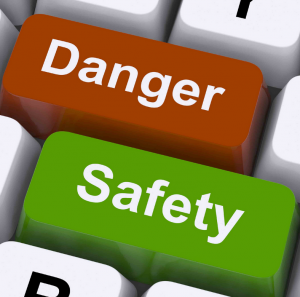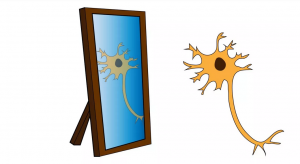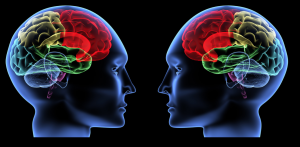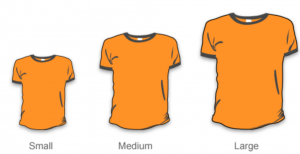In this part of the interview, Anthony shares several client success stories and what the transpires during the process. Exercise is the vehicle, but there are plenty of other elements that must be in alignment as well.
Posts Tagged ‘biopyschosocial’
How does a client achieve success with Function First?
Monday, May 20th, 2019Tags:Anthony Carey, biopyschosocial, chronic pain, Function First, pain science, Pain-Free Program
Posted in General public | No Comments »
Neuroception, Relationships and Clients in Pain
Friday, May 10th, 2019Originally written for ACE Certified by Kevin Murray
No doctor can write a prescription for creating relationships. They are hard-earned and complex undertakings, particularly with people in pain.
Part of what makes pain so distressing is its lack of predictability. Experiencing pain feeds into a negative reinforcing loop of uncertainty, up-regulating cognitive stressors such as fear, apprehension and anxiety. This often runs parallel with clients’ difficulties in regulating their emotions (Hamilton et al., 2004).
Woven into the fabric of all relationships is the principle of reciprocity. For the health and fitness professional, navigating the arena of pain and relationships requires one to become acquainted with the nervous systems role in analyzing risk and safety.
Neuroception: The Mind’s Mediator
Neuroscientist Stephen Porges coined the phrase neuroception to describe the neural mechanisms involved with subjective perception and evaluation (Van Der Kolk, 2015). Specifically, neuroception helps individuals distinguish whether a situation or individual is safe and trustworthy, or dangerous and distressing.
To the individual experiencing pain, their unique view of the world is interpreted through a nervous system that has an altered perception or risk and safety. Every day situations can become fearful and ambiguous, often resulting in maladaptive appraisals of people who are unknown or unfamiliar.
Experiencing pain has one’s neuroceptive system on overdrive, constantly seeking out potentially threatening stimuli. This state of cognitive hypervigilance makes cultivating relationships exceptionally formidable. To combat such psychosocial stressors, successfully establishing relationships with clients in pain involves understanding the underlying mechanisms which enhance positive neuroception.
This process is governed by innate biological systems that once understood, becomes the inception of all meaningful, heartfelt and trusting relationships.
Mechanisms of the Mind
-
Mirror me: Mirror you
Have you ever noticed that when someone is genuinely smiling (even if you don’t know them), you find yourself smiling back? What induces this instinctive mimicry? Why do we yawn when we see someone yawning, or wince when someone smacks their shin on a coffee table?
The neurobiological mechanisms responsible for such nonverbal imitation is regulated by highly sophisticated visuomotor neurons referred to as mirror neurons.
This mirror neuron system (MNS) allows for two individuals, whether lifelong friends or two complete strangers, to simultaneously share neural activity as they attempt to decipher the meaning behind each others nonverbal gestures. The MNS is the gatekeeper of assurance and safety, escorting the manifestation of positive neuroception and is decisively involved in the emergence of all trustworthy relationships. As such, understanding the mirror neuron system’s innate bias towards familiarity and reciprocity becomes a crucial distinction with regards to clients in pain.
-
Brain-to-Brain Dialog
For instance, when two people are in-sync and rapport is mutually harmonious, the MNS is fully engaged. People adopt one another’s facial expressions, hand gestures, postures. even acute motor movements without even knowing they’re doing so (Chartrand and van Baaren, 2009). This is known as automatic imitation. Interestingly, being deliberate and purposeful in the mirroring of others nonverbals (intentional imitation) can also facilitate this same mirrored neural activity between two people.
Similar neurobiological functioning ensues via verbal communication. As an illustration, when two individuals and their speech patterns converge, they adopt one another’s vocal qualities such as tone of voice, tempo of speech, even specific words and phrases. Once again, this takes place without any conscious awareness. These neural dynamics lead to mirrored neurological activity between the speaker’s brain and the listener’s brain. This is referred to as neural coupling (Stephens et al., 2010).
In fact, have you ever experienced such high degrees of rapport where you almost knew what someone was going to say right before they said it? This is no fluke. Neural imagining via fMRI technology reveals that when two people are in-sync and engrossed socially, the delay between speech production and the listeners comprehension is so small that one can often anticipate what’s going to be said next (Hasson et al., 2011).
These anticipatory responses suggest as two individuals become acquainted with each others verbal propensities, the more attuned and mirrored their neurological activity is. Neural coupling highlights how verbal imitation can breed a sense of relatedness and commonality, ultimately nurturing the perception of safety and enhancing positive neuroception.
However, when two people are out-of-sync with their nonverbal mannerisms and verbal speech patterns, this brain-to-brain coupling vanishes (Stephans et al, 2010). When incongruencies are present, the perception of safety slowly fades and gives rise to uncertainty. If clients in pain fail to see aspects of themselves in their health and fitness professional, the more likely skepticism has the opportunity to settle in.
In-depth Analysis
The role mirroring plays in socials interactions is ubiquitous. In fact, visuomotor mimicry is so innately hard-wired that one-month-old infants display the mirroring tendencies of smiling, sticking their tongues out and opening their mouths when observing such behavior in others (Lakin et al., 2003).
As two people learn how to navigate the social complexities of interpersonal communication, what are the neurobiological intricacies involved in learning and interpreting the intended meaning of another individual’s linguistics / gestures? Let’s analyze the MNS in-action through a common example:
-
Spoon Feeding and Neurobiology
As a mother brings a spoon to her infant son’s mouth for the first time, is the child aware of the next sequence required in this exchange? Does the baby open his mouth wide, accommodating for the size and shape of the spoon? Probably not.
Instead, a blank stare of bewilderment is undoubtedly written across the infant’s face. It’s not until the mother visually demonstrates the spoon-to-mouth action that the infant can comprehend what’s being asked of him.
-
Sequence analysis
The infants MNS observes their parent demonstrate the action of spoon-to-mouth (intended outcome).
This creates a visuomotor representation and engages the infants own perceptual-motor circuitry.
The infant can then synthesize the visuomotor representation (action-potential) into motor execution, resulting in the reciprocation of the desired task: i.e. successfully transferring food from spoon-to-mouth for ingestion.
Here we witness the MNS and its architecture having the remarkable ability to transform passive observation, into perceptual understanding and then motor execution (Ferrari et al., 2005). Daily social exchanges such as handshakes, waving hello or goodbye, observing laughter or witnessing sadness all involve the MNS and neural coupling effects.
The mirroring of facial expressions can even result in actually adopting the emotions and moods of others (Lakin et al., 2003). This outcome is recognized as empathy, or having the capacity to understand the feelings of others and view the world through their unique perspective.
The interplay between biological and environmental factors requires more sophistication as our social surroundings increase in complexity. This makes congruent communication and mimicry as a medium for cultivating trusting relationships significant, particularly with clients in pain.
So how can you, the health and fitness professional apply these neurobiological insights with your clients in pain to enhance positive neuroception and ultimately establish relationships?
Integrating Neuroscience into Relationship Building
It’s essential to remember what distinguishes the client in pain from general clientele is their altered perception or risk and safety. Never forget, from the moment you meet your client in pain, they’re skeptically evaluating you and how you conduct yourself. As such, taking special care to remove as much uncertainty and unfamiliarity as possible becomes the primary focus. This process begins with the practice of adapting your own verbal and nonverbal mannerisms to match that of your clients.
For example, when communicating verbally, congruency is essential for positive neuroception. Suppose a client begins describing his story of musculoskeletal challenges with soft and gentle vocal qualities. He takes the time to articulate and pauses often. Attempting to mirror and reciprocate these vocal mannerisms follow the neurobiological prerequisites to manifest neural coupling
Should the client also be sitting on the edge of their seat and leaning forward, following suit and mimicking this seated posture engages the visuomotor neurons of their mirror neuron system. Intentionally integrating and reciprocating these verbal and nonverbal idiosyncrasies serves to enhance the possibility of cultivating positive neuroception.
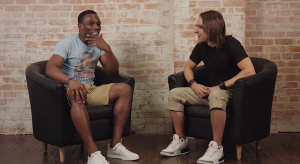
IMAGE TAKEN FROM THE YELLOW BRICK ROAD: A 4-part framework for coaching clients in pain
The matrix of mirroring possibilities includes paying attention to your clients nonverbal features such as facial expressions, eye contact/gaze, body position and proxemics (personal space) and his or her idiosyncratic hand gestures.
Verbal and vocal aspects could encompass specific words or phrases they frequently use, paralinguistic qualities such as tone of voice, rate of speech, vocal modulation and volume, or demonstrating appropriate levels of silence should the client be reserved and introspective. Knowing which aspect(s) to mirror comes down to actively listening and observing the uniqueness of each clients’ communication tendencies.
As clients in pain begin experiencing coherence and familiarity in your communication conduct, their skepticism is superseded with impressions of trust and certainty. Their perception of safety and assurance increases as positive neuroception begins planting its roots.
And while the genesis of cultivating relationships varies from one individual to the next, attempting to enter each client’s world and speak their language helps to nurture the inception of meaningful, heartfelt and trusting relationships with your clients in pain.
Tags:biopyschosocial, chronic pain, fitness education, Kevin Murray, pain science, pain-free movement specialist, PFMS, understanding pain
Posted in Health and fitness professionals | No Comments »
The Four Seasons of Chronic Pain
Tuesday, January 22nd, 2019Written By:
Kevin Murray M.A.(pending), CAFS
Movement Masterminds – CEO
Function First – Director of Education
2012 CSEP CPT of the Year
For individuals’ living with chronic pain, the long-range forecast is often filled with metaphorical rain storms, treacherous winds and long, dark nights. When pain is present, the most noticeable characteristic of a client’s changing climate often revolves around biomechanical restrictions and movement limitations. Perhaps not so obvious (yet often just as burdensome) are the emotional and psychological factors involved with experiencing pain on a regular basis.
As such, in order to create a truly unique, multidimensional strategy for individuals’ in pain, expanding beyond the optics of biomechanics and connective tissue principles alone a becomes imperative. Let’s take a walk through the four seasons of chronic pain and examine how you can help your clients transition smoothly through each one.
The First Season – Winter (fear)
Winter is the first season of chronic pain, where the radical change in climate significantly impacts an individual’s emotional and psychological well-being. The narrative chaperoning this season is generally one of fear; fear of movement, fear of pain worsening, fear of the unknown. This fear can reach such heightened states that just the anticipation of pain is enough to steer an individual away from doing the things that matter most to them. Imagine avoiding an activity altogether because of the anticipation of pain, rather than in response to it!

When such avoidance behaviors manifest, it’s clear that approaching the chronic pain demographic solely from a biomechanical perspective is an incomplete approach. The neuromatrix theory of pain proposes that the output of pain is regulated by afferent sensory mechanisms in conjunction with cognitive inputs (Melzack, 2001). These cognitive inputs have the capacity to upregulate and exacerbate states of anxiety, apprehension, depression, self-doubt; all of which fall into the category of psychological/emotional stressors.
It’s these stressors which contribute significantly to winters burdensome climate. To clients in pain, winter’s dark and onerous atmosphere can sometimes seem like it’s going to endure indefinitely. Successfully helping clients’ transition out of winter requires an understanding of one critical distinction; the difference between a clients ‘external’ and ‘internal’ problem.
The Second Season – Spring (awareness)
The melting of snow, dissipating precipitation and the alchemy of animals awakening from hibernation are all welcomed signs that winter’s season is changing. To the health and exercise professional, guiding clients’ towards these more desirable climates lies in understanding each client’s internal problem.

All clients in pain have two global problems. The ‘external problem’ is the biomechanical or anatomical concerns each client reveals during their initial consultation. Consider the client who has been experiencing knee pain for years. That’s the external problem – the knee pain. The ‘internal problem(s)’ however are the area’s in life which hold the most meaning to individuals negatively impacted by chronic pain. The internal problems are the emotional, psychological and social/environmental stressors that are 100% unique to the individual.
For example, consider a husband and wife who spend meaningful time together each day walking their dog. However, in recent months the husband’s knee pain (external problem) has become so problematic that it’s preventing him from participating in the most meaningful aspect of his day, which is connecting with his wife via their evening walk (internal problem).
A clients’ emotional transition from winter into spring begins with his or her health and exercise professionals’ gaining awareness into the clients’ internal problem(s). This awareness then provides an opportunity for both the coach and the client to begin scripting a new, more desirable narrative based on what the individual client values most.
The Third Season – Summer (possibility)
For any seed to blossom and reach its full potential, a conducive climate is required. To clients in pain – fear, anxiety, feelings of hopelessness and negative self-talk are the metaphorical weeds of cognition. If these weeds are ignored, they can uproot any forward progress. During the summer months, the seeds of possibility must be nurtured, and the cognitive weeds must be pulled on a regular basis.

As with any journey, minor setbacks and moments of self-doubt are to be expected (particularly when chronic pain is present). Because of this, granting clients permission to steep themselves in the process of constructing future-oriented, growth-focused possibilities becomes essential.
The Yellow Brick Road refers to this process as a ‘Possibilities Paradigm’ and involves 4-chapters, each designed to amplify and reinforce a clients’ emotional and psychological resiliency & well-being. When successful, these 4-chapters begin to stir hope & optimism back into each clients’ current and future script.
The Forth Season – Fall (self-regulation)
The fourth and final season bears witness to clients’ returning to pain-free living. And while there are a host of ingredients chaperoning any given pain-free transformation (biomechanics included), a clients’ capacity to accurately assess and regulate their emotional states (self-regulation) is a primary contributor in overcoming his or her internal problem(s).

Contrast the experiential difference in self-regulation between a client stating, “oh no, I just threw my back out again!” vs. “my back tightened up, but I know it’s just my body trying to protecting me.” These are two completely different emotional reactions, the former reverberating sentiments of fear and the latter signifying the perception of safety and protection.
Preventing clients from experiencing negative emotions is, of course, not possible. However, as health and exercise professionals, we can strive to cultivate a climate that enhances each client’s self-regulation competence and help them identify and overcome the emotional and psychological stressors that contribute to their pain. Importantly, you can begin this process with your client even before you have conducted his or her biomechanical evaluation.
Reference:
Melzack, R. (2001). Pain and the neuromatrix in the brain. Journal of Dental Education. Vol. 65. 12, pp. 1378-1382.
Health pros interested in learning more about the Yellow Brick Road curriculum through the American Council on Exercise can click on the image

Tags:biopyschosocial, chronic pain, Kevin Murray, lower back pain, pain-free movement specialist
Posted in General public, Health and fitness professionals | No Comments »
Yellow Brick Road PFMS Sister Curriculum
Friday, December 7th, 2018Written by
Kevin Murray M.A. (pending), CAFS,
Movement Masterminds – CEO
Function First – Director of Education
2012 CSEP CPT of the Year
An Evolution in Coaching Clients with Pain
Written within each client are specific events and circumstances that have significantly shaped what their chronic pain experience means to them.
Elite-level coaches are not only well versed in the realm of biomechanics, they’re also able to recognize, anticipate and consistently meet and exceed the deepest psychological and social needs of their clients; which are often revealed BEFORE the client ever steps foot onto the assessment or exercise floor.
The landscape of helping those in pain is expanding RAPIDLY… Yes, biomechanics are an important aspect of a client’s story, but with much of a clients’ suffering from chronic pain revolving around psychological and environmental factors, the consultation / intake phase becomes that much more imperative when coaching this demographic.
In this 2-min video clip, come behind-the-scenes of our latest collaboration & partnership where we discuss how one’s cognition’s (thoughts, feelings, perceptions, beliefs, values, etc) significantly contribute to an individual’s movement success – or lack there of.
So for the first time, a curriculum that centers solely on the psychological, emotional and environmental factors involved with coaching clients in pain is now available in an online format – exclusively through the American Council on Exercise.
Exclusive Partnership with the American Council on Exercise
The millions who live with & suffer from chronic pain are in desperate need of relief. Together with the American Council on Exercise, the Yellow Brick Road seeks to provide health and exercise professionals an online course that integrates:
• psychological theory,
• pain neuroscience,
• interpersonal relationship-building principles and
• client centered coaching essentials;
So whether you’re a personal trainer, strength & conditioning coach, corrective exercise specialist, health coach, physiotherapist, chiropractor, massage therapist… the entire framework is designed to compliment and fit into your specific area of movement expertise.
Tags:biopyschosocial, education, fitness education, Kevin Murray, pain-free movement specialist, PFMS, understanding pain
Posted in Health and fitness professionals | No Comments »
The Department Store Approach to Pain
Sunday, November 6th, 2016Written By
Kevin Murray, M.A. (pending)
Movement Masterminds – CEO
Function First – Director of Education
2012 CSEP CPT of the Year
THE SIZING APPEAL
The Small, Medium, Large concept to clothing that all department stores embody seems like a straightforward, pragmatic approach to sizing. If the article of clothing fits, you’re golden; If not, you’re either going up a size, or down. But what about those that fall between the cracks? Or above, or below those labels?
I constantly run into this predicament. Sometimes a small is too tight. Other times a medium drapes off my shoulders, which was a good look for me in the 90’s with skateboard in hand – not so cool anymore. I often wish there was a size “smedium”, right in between at that “sweet spot.”
Perhaps you can relate… maybe your frame deserves a “marge”, right in between medium and large.
ATTENTION ALL “SHOPPERS”:
DUALISTIC THINKING IS OUT-OF-DATE & NO LONGER IN STOCK!
Am I really posting up an article about clothing? As much as I dig fashion, the department store approach is actually a metaphor for the movement industry in many respects, and its modus operandi to complex pain problems.
For example, you may be familiar with conceptualized strategies such as:
• Tight hips = stretch em’
• Weak glutes = strengthen em’
• Noticeable swelling = ice that sh#t
• IT Band irritation = foam roll those puppies
A dualistic, department store approach emphasizes that although all individual’s move differently and come from different backgrounds and cultures, there are essentially only 3-types of people – small, medium and large. Chronic pain on the other hand is complex, embodying dynamic dimensions that encompass myriad variables expanding beyond the optics of biomechanical and connective tissue principles alone. A diverse approach to sizing is needed.
GEORGE ENGEL’s BPS APPROACH:
TAILORED FOR ALL SHAPES AND SIZES – SINCE 1977
Progressing beyond (but not excluding) biomechanics and connective tissue, a 3-dimensional approach to working with clients’ in pain include a vast variety of biopsychosocial ingredients and considerations:
• Systems theories
• Empathetic listening
• Uncovering client’s’ values and beliefs systems
• Establishing client trust
• Providing educational dividends around the context of pain
• Explaining the protective purpose that pain serves
are all in play when considering the Neuromatrix and its influence on how we collaborate with, and coach our clients’ in pain.
SUIT YOU, SIR
Working with the chronic pain demographic is much like being a tailor. Each individual comes in with unique dimensions and constraints; different outcomes and desires. A tailor is seeking to understand where specific attention needs to be placed. A tailor asks questions like:
Why doesn’t their clothing fit?
Have they ever been to a tailor before? If so, what was their experience?
How will we know when a successful amendment has taken effect?
What is their specific outcome?
A tailor considers multiple dimensions into his/her analysis and thought process, outside the shackles of unidimensional constraints. Instead, diversification is personified, driven by the uniqueness of each individual and their articles of clothing.
Individuals’ in pain each have their own unique articles of clothing (yes, we’re still talking metaphorically here) that need specific attention and consideration. If you can meet your clients’ unique needs, much like a tailor does, than you’ll have accomplished something truly special in your clients’ eyes.
Amidst the waves of uncertainty that accompany working with individuals’ experiencing chronic pain and relinquishing a dualistic/department store thought-process, above all remember you’re interacting with another individual – and not a mechanistic instrument. Be kind, be empathetic, and as often as possible seek to understand rather than judge.
“The quality of the therapeutic relationship appears to be more predictive of success than any theoretical approach of the helper.” John Nuttall
Tags:biopyschosocial, chronic pain, Kevin Murray, lower back pain, pain science, program design
Posted in General public, Health and fitness professionals | No Comments »
Beyond Biomechanics and Chronic Pain Clients
Thursday, April 7th, 2016The following video is an exchange between Function First Director of Education Kevin Murray and myself on the critical portions of the bio-psycho-social model. These are aspects of the client that we have to respect, acknowledge and consider when working with those in chronic pain. Understanding the interplay between the 3 pieces of the BPS model help you provide the most effective intervention possible.
Tags:biopyschosocial, chronic pain, corrective exercise, pain-free movement specialist, PFMS
Posted in Health and fitness professionals | No Comments »
The Power of Inquiry: 4 Core Questions of Maximum Influence
Tuesday, August 4th, 2015How Does Change Occur?
By Kevin Murray
Is there a specific formula or process that brings about change faster than others? How is it for some, change is immediate and permanent? While for others change is illusive and lasts mere moments?
Questions change our thinking process, therefore the answers we ascertain are in direct result to the quality of the question.
Mastering the art of asking purposeful and powerful questions is an essential ingredient that’s necessary for accelerated change and client breakthroughs’. ALL change begins with the client questioning his or her own thoughts, feelings and beliefs regarding pain, and/or the story behind it.

The following are the ‘4 Core Questions’ created for each pain-free movement specialist to ask their clients’ experiencing chronic pain. Once answered, the clients’ psychological & sociological needs are reviled, yielding invaluable information:
1) “What specifically have you missed out on because of chronic pain?”
The answer to this question provides the pain-free movement specialist with a precise blueprint to the psychological downside that chronic pain has manifested specific to the individual, while synergistically allowing the practitioner to align with the desired outcomes of the client.
In addition, while evaluating this question, each client methodically strips away superficial layers and discovers his or her hidden aspirations to what’s really significant and worth pursuing, while simultaneously moving away from undesirable realities.
2) “How will you know when the corrective intervention has been a success?”
Here’s the truth, what matters to the client is not the overly-pronated sub-talar joint or valgus knee the practitioner may observe. Those phrases mean nothing to the individual in pain.
What really matters to the chronic pain sufferer needs to be uncovered and articulated, which this question is designed to achieve.
Interestingly, it’s often surprising the lack of clarity many clients exhibit when asked to define the specifics to what a successful intervention entails.
Therefore, this question requires each client to focus precisely on defining their “rules to success”. The pain-free movement specialist greatly enhances the probability of successfully navigating ‘unpredictable waters’ once the rules are clear and coherent.
3) “If chronic pain was no longer the reality, what would you do differently?”
This question subconsciously grants permission for each individual to begin crafting the mental framework of what a life that’s no longer interrupted by pain will look like, while simultaneously shifting their conscious intentions back towards the emotional states that are most meaningful in his or her life.
Painting a clear picture of the emotional and physical ambitions significant to the chronic pain sufferer is a critical ingredient in creating pain-free transformations. It’s during this process where uncertainty & apprehension shifts towards inspiration & possibility.
4) “What would a life without pain mean to you?”
We cannot force our beliefs or emotional values on clients.
This question provides a vital spark that begins the mapping process to each client’s exploration for meaning, which is essentially the catalyst to providing an environment that’s truly unique to the individual’s wants, desires, aspirations and goals.
The art of a successful intervention involves uncovering (through curious inquiry) which values and ethical conduct each client abides by, the belief system that guides them, and ultimately what’s most meaningful and worthwhile pursuing.
Question: Can you recall a time when a particular question had a positive impact on your personal or professional life? Do you have a powerful question that you ask each client? Please leave a comment below.
Written by:
Kevin Murray
Movement Masterminds – CEO
Function First – Director of Education
Tags:biopyschosocial, coaching, Kevin Murray, motivational interviewing
Posted in Health and fitness professionals | No Comments »
Understanding Pain Video 1
Tuesday, May 26th, 2015Here is the 1st installment in the Understanding Pain Video Series.
Is this your first introduction to the bio-psycho-social model? If so, what are your thoughts thus far?
If you’re already familiar, how has implementing it helped you in your journey in understanding pain? Please share your comments below.
Tags:biopyschosocial, pain
Posted in Health and fitness professionals | No Comments »
